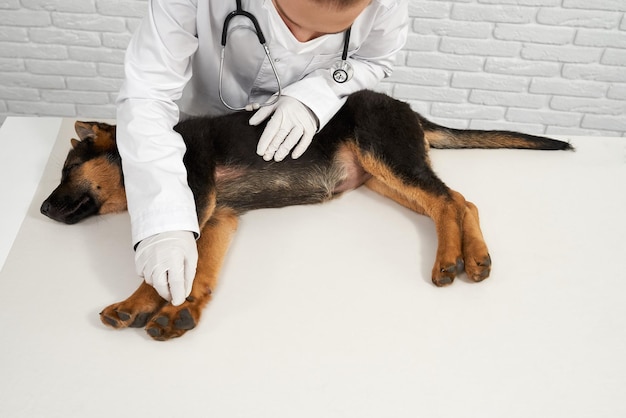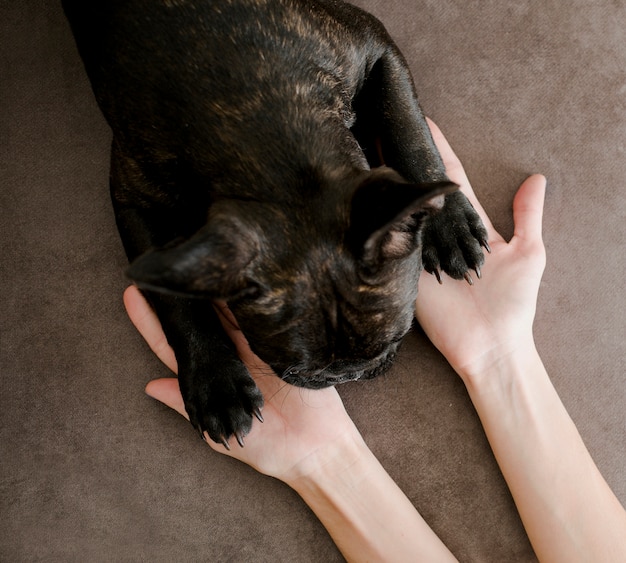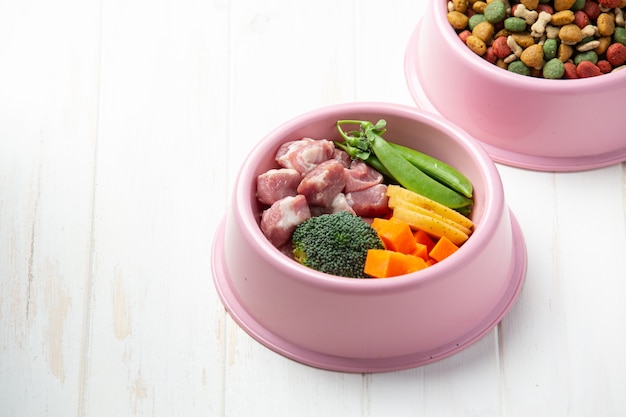What to Expect From Pet Knee Cap Dislocation Surgery


What to Expect From Pet Knee Cap Dislocation Surgery
If your dog or cat is suddenly limping, skipping steps, or struggling to walk, you may be worried about what is causing their discomfort. One common orthopedic issue, especially in smaller dogs, is a dislocated knee cap—known medically as patellar luxation. At Garbizo Animal Clinic, located at 4400 West Sample Road Suites 148, Coconut Creek, FL 33073, our experienced veterinary team understands how stressful it can be when your beloved pet needs surgery. That's why we focus on compassionate care and clear communication every step of the way.
In this blog, you'll learn what patellar luxation is, how to recognize the signs in your pet, what causes the condition, and how pet knee cap dislocation surgery in Coconut Creek can restore your pet’s comfort and mobility. We’ll also walk you through what to expect before, during, and after surgery, and offer tips for at-home care to support recovery. If you've been searching for a "vet near me" who specializes in pet orthopedic surgery, or specifically need pet knee cap dislocation surgery in Coconut Creek, this guide is designed for you. For more details about the procedure, you can also visit our dedicated Knee Cap Dislocation Surgery information page.
Understanding the Signs of Patellar Luxation in Pets
Many pet owners first notice something is wrong when their dog or cat suddenly starts limping or favoring one leg. In dogs, especially smaller breeds like Yorkshire Terriers, Pomeranians, and Chihuahuas, patellar luxation is a frequent diagnosis. Recognizing symptoms early can make a significant difference in your pet’s comfort and long-term joint health.
Key symptoms include intermittent skipping or hopping on one leg, an awkward gait, or sudden yelping when using the affected limb. You might also see your pet holding up a hind leg or occasionally stretching it backward in an effort to pop the kneecap back into position. Over time, chronic patellar luxation can lead to more constant lameness, muscle loss in the affected limb, and even arthritis due to abnormal joint wear.
Some pets may show only mild signs at first, especially if the knee cap pops in and out of place quickly. Others, particularly those with more severe dislocations, may have persistent pain and difficulty bearing weight. If your pet’s symptoms are interfering with their ability to play, walk, or enjoy daily activities, it’s time to seek veterinary attention.
Why Do Pets Develop Knee Cap Dislocation?
Understanding the causes of patellar luxation helps pet owners make informed decisions about prevention and treatment. In most dogs, knee cap dislocation is a developmental issue, meaning it is often hereditary and related to how the bones and soft tissues form as the puppy grows. The knee cap, or patella, normally glides smoothly in a groove at the end of the femur. When the groove is too shallow or the alignment of the limb is off, the patella can slip out of position to the inside (medial) or, less commonly, the outside (lateral) of the knee.
While genetics play the largest role, other factors can contribute. Trauma—such as being hit by a car or suffering a fall—can cause sudden dislocation in pets with previously healthy knees. In some cases, obesity or chronic joint stress can worsen the condition. Cats can also experience patellar luxation, often as a result of injury or underlying joint abnormalities.
Patellar luxation is typically graded on a scale from mild (grade I) to severe (grade IV), with higher grades indicating more frequent or permanent dislocation. The severity of your pet’s condition will influence the treatment plan recommended by our veterinarians.
What Happens During Pet Knee Cap Dislocation Surgery?
When conservative treatments like weight management, physical therapy, or pain medication don’t provide enough relief, surgery may be the best option for restoring your pet’s mobility. At Garbizo Animal Clinic, our veterinary team has extensive experience performing patellar luxation surgery in dogs and cats.
The surgical approach depends on the severity and type of luxation. Most commonly, the procedure involves deepening the groove in the femur to help the knee cap stay in place, realigning the attachment of the patellar ligament, and tightening or releasing surrounding soft tissues as needed. These steps are tailored to each pet to ensure the best possible outcome. Our veterinarians use advanced techniques and monitor your pet closely throughout the procedure to minimize risks and support a smooth recovery.
For pets with additional orthopedic problems, such as ligament injuries or fractures, we can coordinate care to address all of your pet’s needs. If you want to know more about the broader range of orthopedic procedures available, our Orthopedic Surgery services for pets page provides further information about our capabilities.
What to Expect Before, During, and After Surgery
Before surgery, your pet will undergo a thorough examination, bloodwork, and possibly diagnostic imaging to confirm the diagnosis and rule out other issues. This ensures that your pet is a good candidate for anesthesia and allows our veterinary professionals to plan the procedure in detail.
On the day of surgery, your pet will be admitted to our clinic and given pre-anesthetic medication to keep them comfortable. After the procedure, pets are monitored as they wake up from anesthesia, and pain management is provided. Most pets can go home the same day or within 24 hours, depending on their individual needs.
Recovery from pet knee cap dislocation surgery usually involves several weeks of restricted activity. Your pet may need to wear an Elizabethan collar to prevent licking the incision, and you’ll receive detailed guidance on administering medication and performing gentle rehabilitation exercises at home. Most pets regain full function and enjoy improved quality of life following successful surgery.
Home Care and Preventing Future Problems
Your role in your pet’s recovery is essential. Keeping your pet calm and preventing jumping or running during the initial healing period helps protect the surgical repair. Follow all instructions regarding medication, wound care, and scheduled follow-ups. Physical therapy, such as gentle range-of-motion exercises, can aid in restoring flexibility and strength. Our veterinary professionals will show you exactly how to support your pet’s rehabilitation at home.
To help prevent knee cap dislocation in pets, especially if you have a breed prone to the condition, maintain a healthy weight through balanced nutrition and regular exercise. Avoid rough play or activities that could put excessive strain on your pet’s joints. Early intervention for limping or lameness can prevent minor issues from progressing to more severe problems.
When Should You Seek Veterinary Care for Knee Cap Dislocation?
If your pet is showing any signs of lameness, pain, or difficulty using a limb, prompt veterinary assessment is crucial. Early evaluation allows our veterinarians to diagnose the problem accurately and recommend the best course of action. Sudden, severe lameness, inability to bear weight, or visible deformity should be considered urgent, as these signs may indicate a more serious injury or advanced luxation.
In Coconut Creek and surrounding communities, pet owners trust our veterinary team at Garbizo Animal Clinic for thorough diagnostics and individualized treatment. If you notice your pet struggling to move or your dog is displaying signs of patellar luxation, schedule an appointment as soon as possible. Searching for “veterinary services near me” or “pet knee cap dislocation surgery near me” can help you find local resources, but having a trusted relationship with your primary veterinarian ensures continuity of care and peace of mind.
For situations involving more complex injuries, such as fractures or multiple joint issues, we also offer comprehensive Fractures & Dislocations Surgery services for pets to address a wide range of orthopedic needs.
Supporting Your Pet’s Mobility and Comfort
Patellar luxation can be a source of pain, but with timely diagnosis and expert care, most pets can return to their favorite activities. At Garbizo Animal Clinic, our approach to pet knee cap dislocation surgery in Coconut Creek is rooted in individualized care, advanced surgical techniques, and ongoing support throughout recovery. We understand that choosing surgery for your pet is a big decision, and our veterinary professionals are here to answer your questions and guide you at every stage.
If you are searching for the best veterinarian near me to help your pet move comfortably again, we invite you to contact our clinic today. To schedule an appointment or learn more about our services, please call (954) 974-1136 or visit us at 4400 West Sample Road Suites 148, Coconut Creek, FL 33073. For more detailed information on pet knee cap dislocation surgery and related orthopedic procedures, visit our Knee Cap Dislocation Surgery information page or learn about our comprehensive Orthopedic Surgery services for pets.
Your pet’s health, comfort, and happiness are always our top priorities. With a combination of clinical expertise, personalized care, and ongoing communication, our veterinary team is dedicated to helping your pet live an active, pain-free life.
Disclaimer: This blog is for informational purposes only and should not replace professional veterinary advice. If your pet is experiencing symptoms of patellar luxation or any orthopedic condition, please consult a veterinarian for personalized diagnosis and treatment.


















